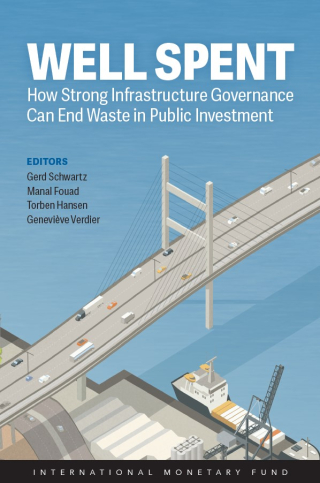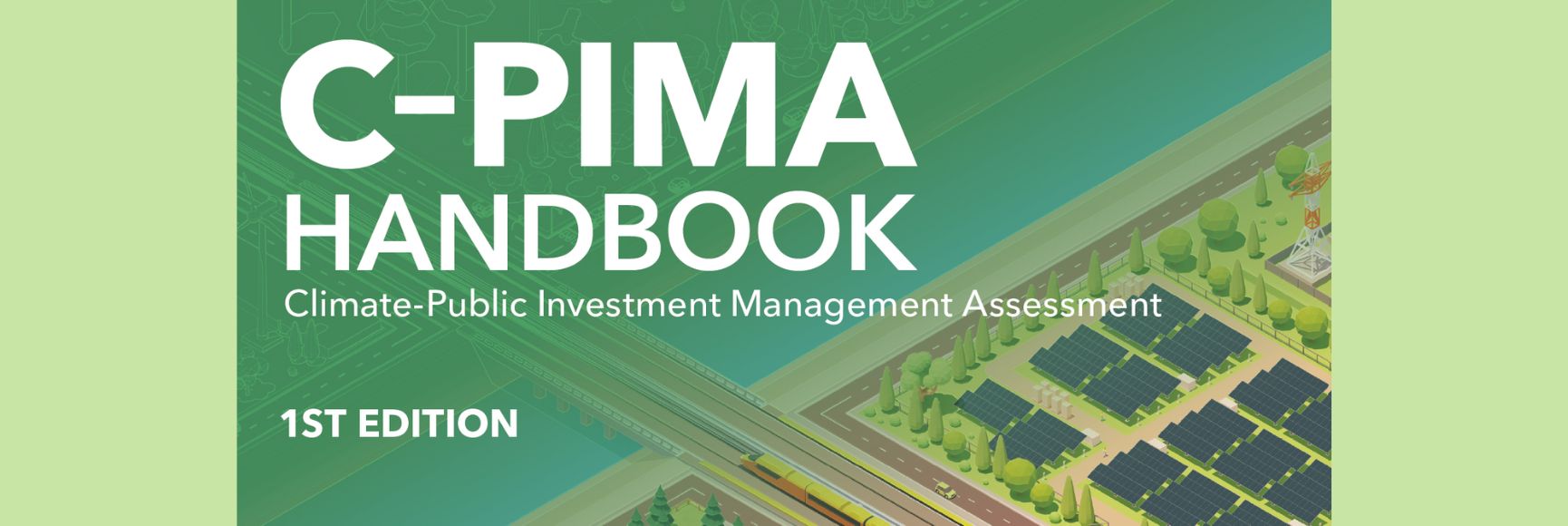
Posted by Robert Taliercio[1] and Eduardo Andrés Estrada[2]
Strong project appraisal and selection are critical for good infrastructure governance. Project appraisal is the regulated process through which investment projects are assessed to determine a project's viability. Meanwhile, project selection is the process through which projects are systematically vetted for inclusion in the budget. Many low-income developing countries (LIDCs) and emerging market economies have not put in place sound mechanisms in either of these areas. Given the critical importance of project appraisal and selection for the creation of quality infrastructure, this is an issue of great concern.
A chapter[3] in the recently published IMF volume, Well Spent: How Strong Infrastructure Governance Can End Waste in Public Investment, explains the key roles that project appraisal and project selection play in infrastructure governance and explore good practices in the institutional design of these functions. The authors note that effective appraisal supports decision-making for the optimization of a project’s design and impact and is critical for the selection of projects that yield the highest social and economic returns. Project appraisal and selection are vital because they serve a gatekeeping function, ensuring in principle that only socially and economically viable projects reach the implementation stage. Inaccurate and unrealistic appraisal may lead to inefficiency and waste of resources through cost overruns during implementation, or even incomplete projects. Furthermore, poor project selection can result in wasteful ‘white elephant’ projects with limited social and economic value.
The chapter notes that:
- A clear, well-supported appraisal methodology and published project selection criteria, with well-defined processes for project selection, are the foundations of a good infrastructure governance system.
- Undue political influence is an issue in many countries and should be mitigated through rigorous analysis, central ministry scrutiny using clear and transparent procedures, and an independent review of projects before their inclusion in the budget.
- In low-capacity countries, outsourcing of project appraisal could be considered but should be balanced with the need for in-house capacity building and the development of practical know-how.
Four main types of evaluation that are described in the chapter are used in effective project appraisal: cost-benefit analysis, cost-effectiveness analysis, multicriteria analysis, or simplified methodologies when the above methods are infeasible or too costly. In general, all countries rely to a great extent on cost-benefit analysis, although they also complement it in specific cases with other methodologies. In the UK, cost-benefit analysis is the default methodology, whereas in Korea, which uses multicriteria analysis, cost-benefit analysis is the most heavily weighted component of the analysis. In Ireland, the methodological choice depends on the type, scale, and complexity of the project, with cost-benefit analysis used wherever possible.
Appraisals usually comprise two main phases:
- Prefeasibility, under which a study is prepared presenting the relevant alternatives to solve a given problem, risks are identified, and preliminary estimates of costs and benefits are provided.
- Feasibility, which expands on the prefeasibility phase by refining data collection, providing detailed estimates of costs and benefits for the selected alternative, performing a detailed assessment of risks, and assessing environmental and social impacts.
The chapter notes that conditions for application of the appraisal system vary widely between countries. Decision rules around cost thresholds and exemptions govern whether project proposals are subject to appraisals and, if so, which types of appraisals are to be used. In principle, all projects should be covered by an economic appraisal. However, in practice, countries limit how and under which conditions different appraisal techniques are applied. In some countries, such as Norway, Canada, and Korea, only larger projects are subject to rigorous cost-benefit analysis. In other countries, such as Ireland, the appraisal methodology depends on the type, scale, and complexity of the project.
The share of the public investment budget that is subject to project appraisal is determined largely by the thresholds applied in the appraisal system. Yet, no established best practice exists when it comes to using such thresholds, which have a large range, even if normalized by GDP. This indicates that appraisal is operationalized very differently across countries. Many LIDCs would find it practical to set a higher initial threshold when capacity is low and gradually lower it as the capacity of the system matures.
As for appraisal methodologies, the following are notable good-practice country experiences:
- Chile’s methodological approach is one of the most comprehensive and transparent in use. It applies social cost-benefit analysis as the default mode of analysis.
- Korea’s multicriteria analysis uses a decision-making technique that treats economic analysis (largely cost-benefit analysis) as a core factor, but also considers other techniques, such as policy analysis and regional development analysis, which are weighted according to government priorities.
- The UK’s methodology (the “Green Book”) is perhaps the most widely emulated and one of the longest in use. It recommends social cost-benefit analysis as the preferred approach, while social cost-effectiveness analysis is also used in some circumstances.
Robust appraisal methodologies provide for centrally calculated national economic parameters. To be useful, the general methodology must also be complemented by specific sectoral guidelines, as in Chile and Korea. A core element of a well-developed appraisal methodology is risk analysis, which is required in Chile, Colombia, Ireland, Korea, and the United Kingdom, among other countries. More recently, research on optimism bias—which shows that project costs and completion times tend to be systematically higher and longer, respectively, than initially projected—has motivated some governments to adopt methods to control ex ante for such biases. The UK recommends applying adjustments for optimism bias and provides adjustment factors for different generic categories of spending.
[1] Regional Director, Equitable Growth, Finance and Institutions (EFI) for Latin America and the Caribbean, The World Bank.
[2] Governance Specialist, The World Bank.
[3] Chapter 13 on “Best Practices in Project Appraisal and Selection” by Robert Taliercio and Eduardo Andrés Estrada.
Note: The posts on the IMF PFM Blog should not be reported as representing the views of the IMF. The views expressed are those of the authors and do not necessarily represent those of the IMF or IMF policy.





